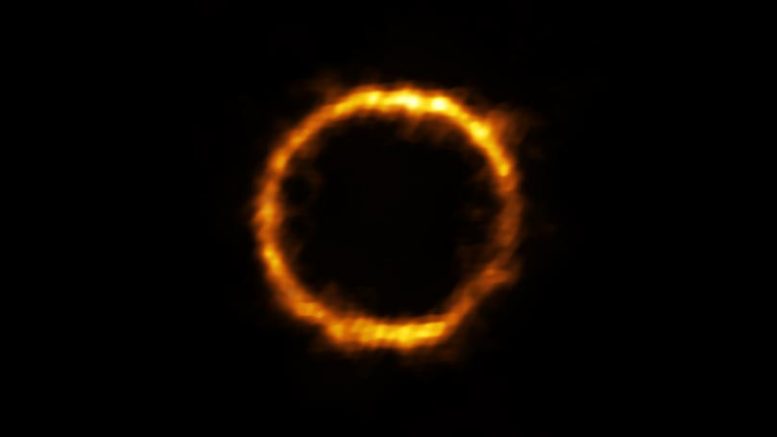
Astronomers using ALMA, in which the ESO is a partner, have revealed an extremely distant galaxy that looks surprisingly like our Milky Way. The galaxy, SPT0418-47, is gravitationally lensed by a nearby galaxy, appearing in the sky as a near-perfect ring of light. Credit: ALMA (ESO/NAOJ/NRAO), Rizzo et al.
Galaxy is distorted, appearing as a ring of light in the sky.
Astronomers using the Atacama Large Millimeter/submillimeter Array (ALMA), in which the European Southern Observatory (ESO) is a partner, have revealed an extremely distant and therefore very young galaxy that looks surprisingly like our Milky Way. The galaxy is so far away its light has taken more than 12 billion years to reach us: we see it as it was when the Universe was just 1.4 billion years old. It is also surprisingly unchaotic, contradicting theories that all galaxies in the early Universe were turbulent and unstable. This unexpected discovery challenges our understanding of how galaxies form, giving new insights into the past of our Universe.
Astronomers using ALMA, in which the ESO is a partner, have revealed an extremely distant galaxy that looks surprisingly like our Milky Way. This video summarizes their findings. Credit: ESO
“This result represents a breakthrough in the field of galaxy formation, showing that the structures that we observe in nearby spiral galaxies and in our Milky Way were already in place 12 billion years ago,” says Francesca Rizzo, Ph.D. student from the Max Planck Institute for Astrophysics in Germany, who led the research published today in Nature. While the galaxy the astronomers studied, called SPT0418-47, doesn’t appear to have spiral arms, it has at least two features typical of our Milky Way: a rotating disc and a bulge, the large group of stars packed tightly around the galactic center. This is the first time a bulge has been seen this early in the history of the Universe, making SPT0418-47 the most distant Milky Way look-alike.
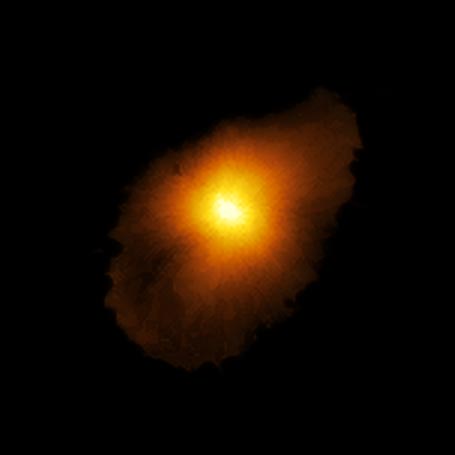
Astronomers using ALMA, in which the ESO is a partner, have revealed an extremely distant galaxy that looks surprisingly like our Milky Way. The galaxy, SPT0418-47, is gravitationally lensed by a nearby galaxy, appearing in the sky as a near-perfect ring of light. The research team reconstructed the distant galaxy’s true shape, shown here, and the motion of its gas from the ALMA data using a new computer modeling technique. Credit: ALMA (ESO/NAOJ/NRAO), Rizzo et al.
“The big surprise was to find that this galaxy is actually quite similar to nearby galaxies, contrary to all expectations from the models and previous, less detailed, observations,” says co-author Filippo Fraternali, from the Kapteyn Astronomical Institute, University of Groningen in the Netherlands. In the early Universe, young galaxies were still in the process of forming, so researchers expected them to be chaotic and lacking the distinct structures typical of more mature galaxies like the Milky Way.
Studying distant galaxies like SPT0418-47 is fundamental to our understanding of how galaxies formed and evolved. This galaxy is so far away we see it when the Universe was just 10% of its current age because its light took 12 billion years to reach Earth. By studying it, we are going back to a time when these baby galaxies were just beginning to develop.
This schematic animation shows how light from a distant galaxy is distorted by the gravitational effects of a foreground galaxy, which acts like a lens and makes the distant source appear distorted, but magnified, forming characteristic rings of light, known as Einstein rings. This effect has allowed astronomers to see the distant galaxy SPT0418-47 (which appears as a golden ring in the ALMA images) in finer detail than would have been possible otherwise. Credit: ALMA (NRAO/ESO/NAOJ)/Luis Calçada (ESO)
Because these galaxies are so far away, detailed observations with even the most powerful telescopes are almost impossible as the galaxies appear small and faint. The team overcame this obstacle by using a nearby galaxy as a powerful magnifying glass — an effect known as gravitational lensing — allowing ALMA to see into the distant past in unprecedented detail. In this effect, the gravitational pull from the nearby galaxy distorts and bends the light from the distant galaxy, causing it to appear misshapen and magnified.

Astronomers using ALMA, in which the ESO is a partner, have revealed an extremely distant galaxy that looks surprisingly like our Milky Way. The galaxy, SPT0418-47, is gravitationally lensed by a nearby galaxy, appearing in the sky as a near-perfect ring of light (left). The research team reconstructed the distant galaxy’s true shape and the motion of its gas (right) from the ALMA data using a new computer modeling technique. The observations indicate that SPT0418-47 is a disc galaxy with a central bulge and the material in it rotates around the center. Gas moving away from us is shown in red, while gas moving in the direction of the observer is shown in blue. Credit: ALMA (ESO/NAOJ/NRAO), Rizzo et al.
The gravitationally lensed, distant galaxy appears as a near-perfect ring of light around the nearby galaxy, thanks to their almost exact alignment. The research team reconstructed the distant galaxy’s true shape and the motion of its gas from the ALMA data using a new computer modeling technique. “When I first saw the reconstructed image of SPT0418-47 I could not believe it: a treasure chest was opening,” says Rizzo.
“What we found was quite puzzling; despite forming stars at a high rate, and therefore being the site of highly energetic processes, SPT0418-47 is the most well-ordered galaxy disc ever observed in the early Universe,” stated co-author Simona Vegetti, also from the Max Planck Institute for Astrophysics. “This result is quite unexpected and has important implications for how we think galaxies evolve.” The astronomers note, however, that even though SPT0418-47 has a disc and other features similar to those of spiral galaxies we see today, they expect it to evolve into a galaxy very different from the Milky Way, and join the class of elliptical galaxies, another type of galaxies that, alongside the spirals, inhabit the Universe today.
This animation gives the viewer an idea of how astronomers reconstructed the true shape of the SPT0418-47 galaxy, from ALMA observations of the gravitationally lensed view of the galaxy. SPT0418-47 is gravitationally lensed by a nearby galaxy, appearing in the sky as a near-perfect ring of light, shown at the start of the video. At the end, we see the image of SPT0418-47 that astronomers obtained when they used a new computer modeling technique to reconstruct its real shape and motion of gas. Credit: ALMA (NRAO/ESO/NAOJ)/Martin Kornmesser (ESO)
This unexpected discovery suggests the early Universe may not be as chaotic as once believed and raises many questions on how a well-ordered galaxy could have formed so soon after the Big Bang. This ALMA finding follows the earlier discovery announced in May of a massive rotating disc seen at a similar distance. SPT0418-47 is seen in finer detail, thanks to the lensing effect, and has a bulge in addition to a disc, making it even more similar to our present-day Milky Way than the one studied previously.
Future studies, including with ESO’s Extremely Large Telescope, will seek to uncover how typical these ‘baby’ disc galaxies really are and whether they are commonly less chaotic than predicted, opening up new avenues for astronomers to discover how galaxies evolved.
Reference: “A dynamically cold disk galaxy in the early Universe” by F. Rizzo, S. Vegetti, D. Powell, F. Fraternali, J. P. McKean, H. R. Stacey and S. D. M. White, 12 August 2020, Nature.
DOI: 10.1038/s41586-020-2572-6
The team is composed of F. Rizzo (Max Planck Institute for Astrophysics, Garching, Germany [MPA]), S. Vegetti (MPA), D. Powell (MPA), F. Fraternali (Kapteyn Astronomical Institute, University of Groningen, the Netherlands), J. P. McKean (Kapteyn Astronomical Institute and ASTRON, Netherlands Institute for Radio Astronomy), H. R. Stacey (MPA, Kapteyn Astronomical Institute and ASTRON, Netherlands Institute for Radio Astronomy) and S. D. M. White (MPA).
ESO is the foremost intergovernmental astronomy organization in Europe and the world’s most productive ground-based astronomical observatory by far. It has 16 Member States: Austria, Belgium, the Czech Republic, Denmark, France, Finland, Germany, Ireland, Italy, the Netherlands, Poland, Portugal, Spain, Sweden, Switzerland, and the United Kingdom, along with the host state of Chile and with Australia as a Strategic Partner. ESO carries out an ambitious program focused on the design, construction, and operation of powerful ground-based observing facilities enabling astronomers to make important scientific discoveries. ESO also plays a leading role in promoting and organizing cooperation in astronomical research. ESO operates three unique world-class observing sites in Chile: La Silla, Paranal, and Chajnantor. At Paranal, ESO operates the Very Large Telescope and its world-leading Very Large Telescope Interferometer as well as two survey telescopes, VISTA working in the infrared and the visible-light VLT Survey Telescope. Also at Paranal ESO will host and operate the Cherenkov Telescope Array South, the world’s largest and most sensitive gamma-ray observatory. ESO is also a major partner in two facilities on Chajnantor, APEX and ALMA, the largest astronomical project in existence. And on Cerro Armazones, close to Paranal, ESO is building the 39-meter Extremely Large Telescope, the ELT, which will become “the world’s biggest eye on the sky.”

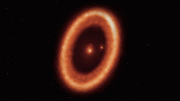
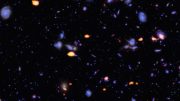
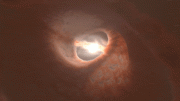

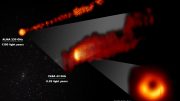
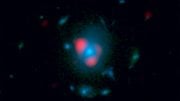
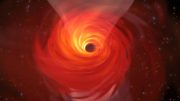
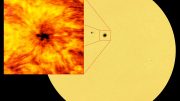
Surely this is the final nail in the coffin for Big Bang protagonists? Clearly a galaxy of the Milky Way’s size and structure took longer than 1.4 Billion years to manifest, supposedly making this object older than the universe! I don’t think so. It may very well be that detectable light can only travel 13.7 Billion light years but let’s stop assuming this sets a limit of the scale of the Cosmos or sets a timestamp on some unproven event of creation. The presence of a Milky-Way reminiscent galaxy so far away proves that there was no Big Bang.
It SHOULD be enough to end the myth, but IMO this evidence will be insufficient.
The premise of a Big Bang assumes every gram of matter from every person, planet, star, dust cloud, black hole, and every other cosmic body all originated from a singularity. This is so nonsensical, the theory should not surpass this point with any basic understanding of physics. (In other words, the theory is a result of mathematical constructs that become impractical or impossible when physics is applied.)
Then, layer on decades of nonsensical theories like cosmic inflation – attempting to explain away the obvious failures in the theory with even more absurd theories. Too many people have spent too many years as proponents of the theory and all the subsequent support theories.
I believe the first real dent in the acceptance of the theory will be either (1) when it is widely accepted that black holes are simply the blenders of the cosmos that recirculate matter (matter escapes at the poles) or (2) when telescopes can see beyond 15 billion light years. When formed galaxies are observed at an agreed 15 billion light years, some will argue the Big Bang is just older, but I believe this information should significantly impact acceptance of the theory.
And then, we need at least one generation for Plank’s Principle: “A new scientific truth does not triumph by convincing its opponents and making them see the light, but rather because its opponents eventually die, and a new generation grows up that is familiar with it.”
That said, waaaaaay too many people think the Earth is flat, so… who knows how many generations it may take.
And, I’m not sure where you are, but in America, at the moment, our understanding of science is backpedaling at a rapid pace.
Well, if the universe is 13.5 Billion light years across and that thing is 12 Billion light years away then it and we must be fairly near to the edge of the Universe, right? The furthest away either of us could be from the edge is 1.5 Billion light years. If so then why can’t we find which direction is the near edge of the universe and which is the far edge. Sometimes I thing astronomers are talking in code that makes no sense in layman’s language.
Curious as to how they determine it’s 12B light years away (or more precisely, that the light is 12B years old–the galaxy in question must be closer to 40B LY away). Is it just based on red shift measurement?
Maybe they are looking at the back of their own head.
Refreshing to see comments actually questioning the “science” of articles like these. Not sure at what point a theory (belief really) is totally falsified in cosmology, because the major tenants like big bang just never seem to die, or even be seriously questioned no matter how many countless/constant surprising discoveries are made that completely contradict them. But Jason, you make an excellent point about generational die off. If you think of the thousands of careers that have been invested in the current belief structures of mainstream cosmology over last many decades now, the literally billions of dollars in research and salaries and advertising of these beliefs, and all supported by popular culture, there is no vested interest in considering alternatives, quite the opposite in fact. Cosmology has been reduced to literally the biggest, most expensive snipe hunt in history.
Read all the comments with interest.
The most astute one appear to be , the one which says, “maybe they are seeing the back of their own head.”
Why do I think it is the most astute comment. Here iss a theory for you to explore further.
Think of Time as having an infinite number of dimensions like a sphere. Space too can be thought off as having and infinite number of Dimensions and spherical in nature. Not suggesting that these are perfect sphere, but you get the idea.
Move away from the thinking that Space -Time Continuum can be explained in linear terms. Now workout the mathematics of the Space -Time Continuum if both Space and Time have an infinite number of Dimensions and both are cyclical in nature!
Presumably there is a distance beyond which that we cannot “see” electromagnetic radiation because it hasn’t got to us yet. How far away is that edge of the electromagnetically visible universe?
What we are seeing is our own Galaxy .. actually from the back… anothern frame point. .. Time and space bend. So Not more Big bang searching .The JBST prove that there are actually mature galaxiez 12 bill. LY away with Black holes..and not primordial ones.
So no more results and affirmations than are no proven tu be publish.